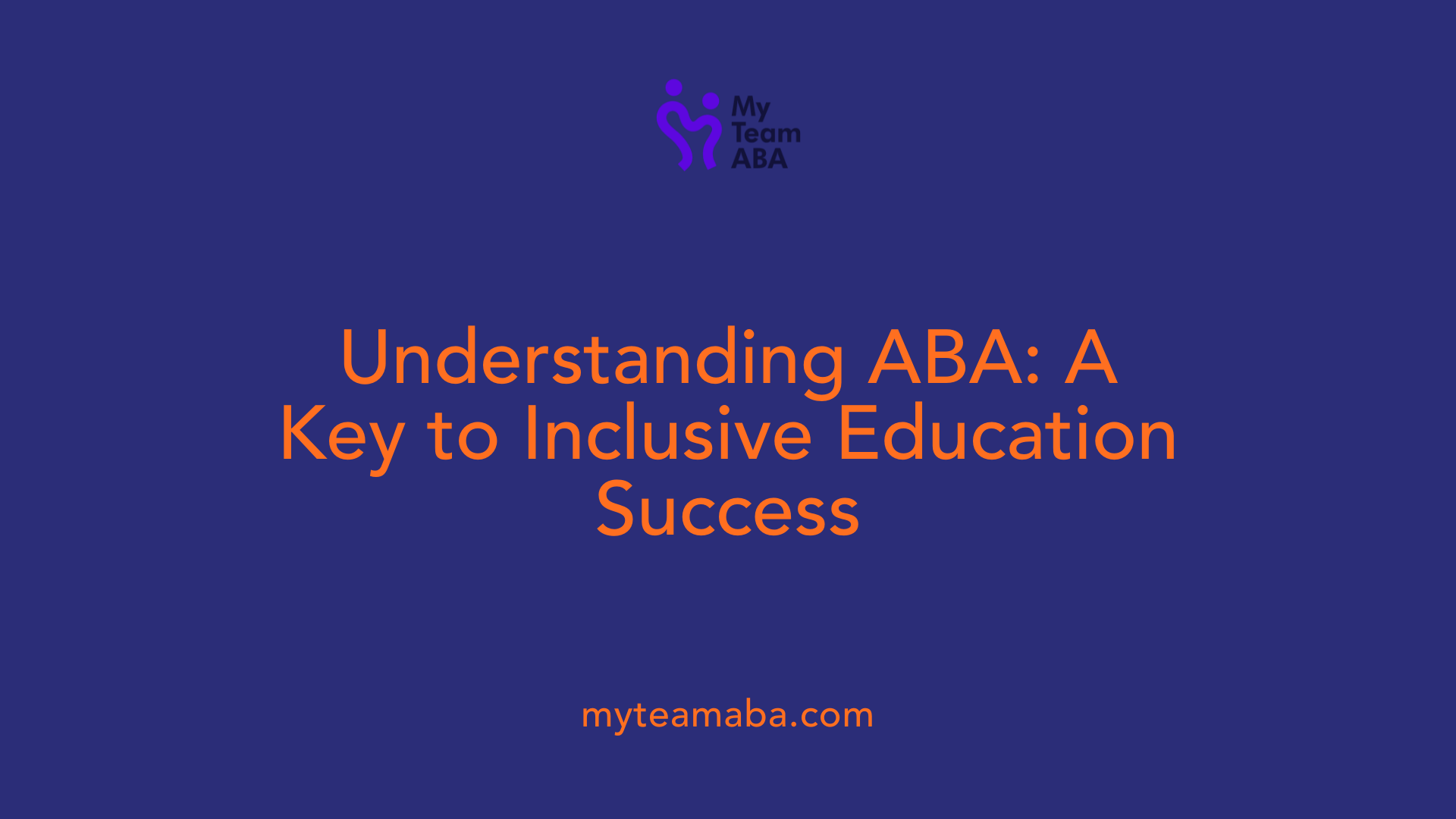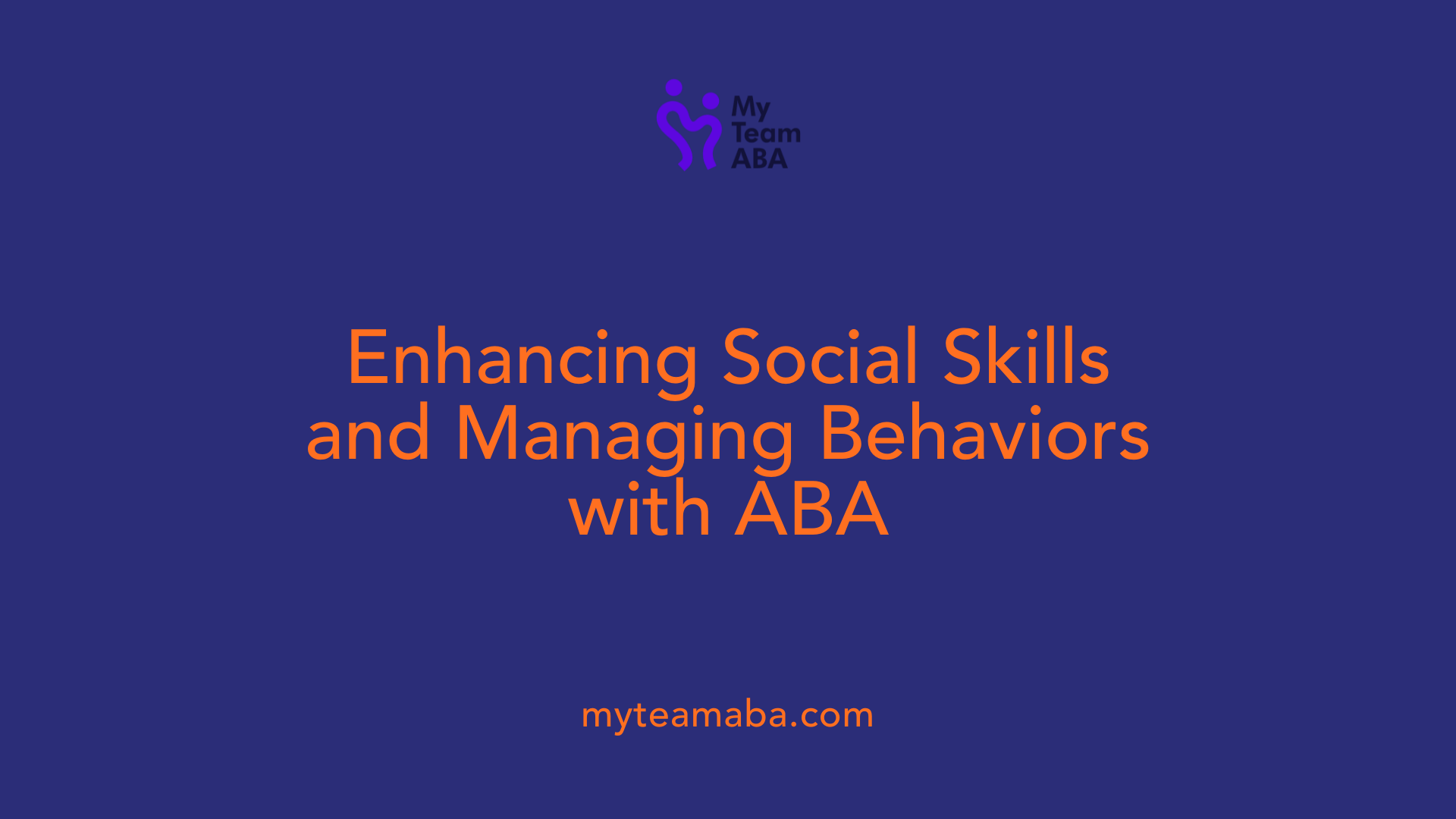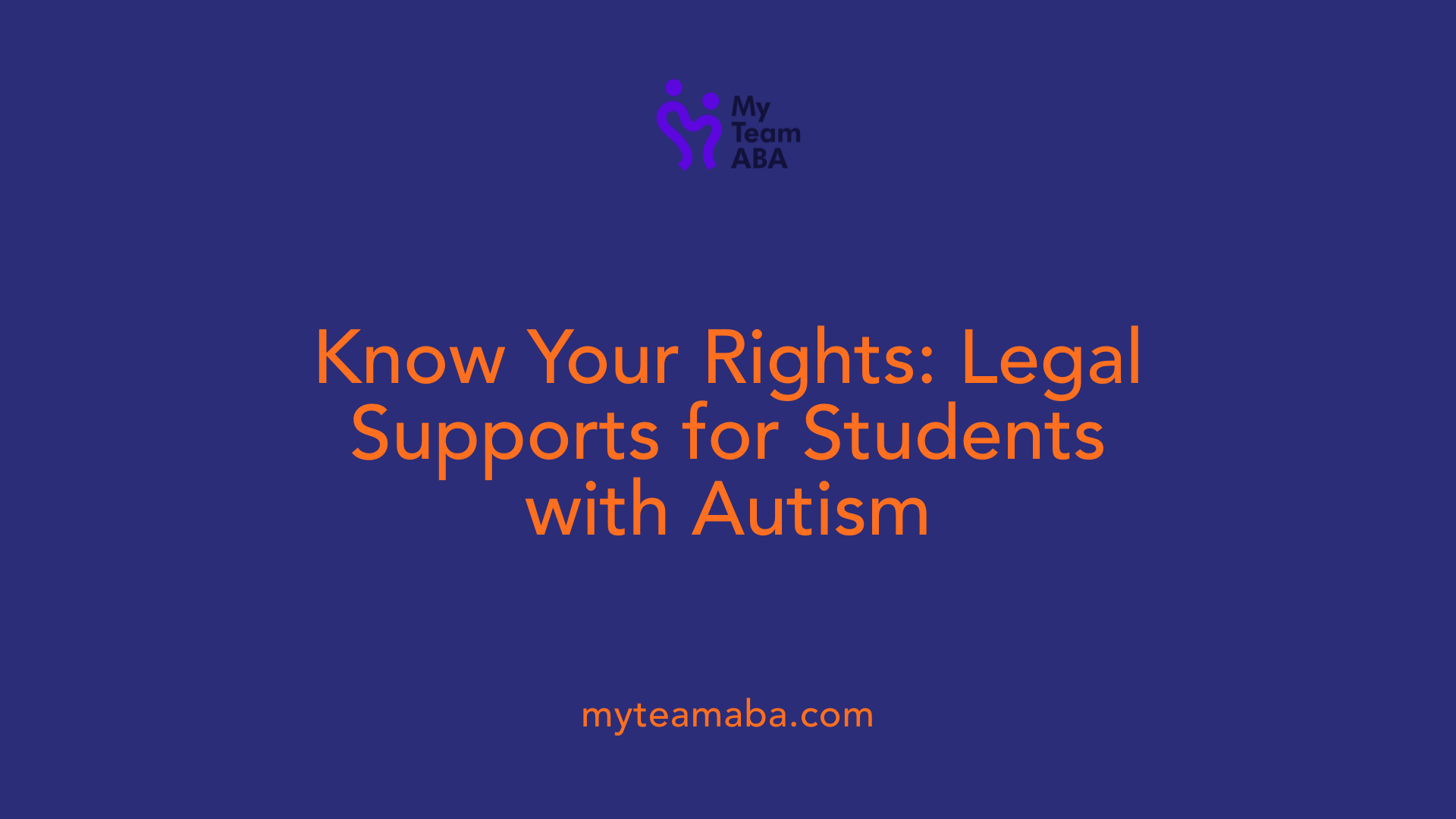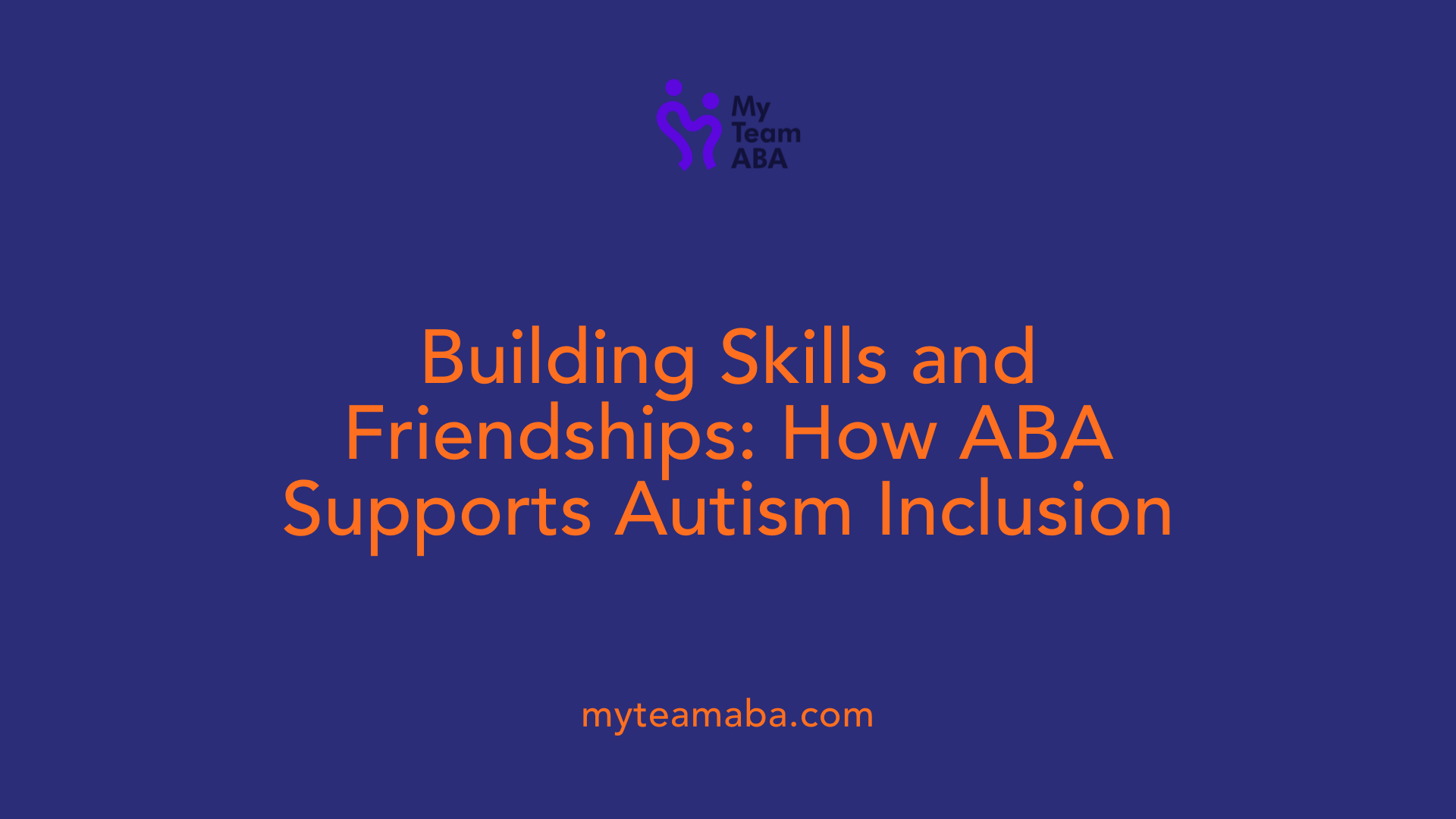How ABA Therapy Supports Inclusion in Mainstream Education
July 18, 2025
Promoting Effective Inclusion Strategies in Education

Understanding the Role of ABA in Mainstream Classrooms
In recent years, the importance of inclusive education for children with autism spectrum disorder (ASD) has gained recognition worldwide. A key approach that supports this inclusivity is Applied Behavior Analysis (ABA), a scientifically validated method designed to understand and modify behaviors. This article explores how ABA therapy underpins successful inclusion in mainstream education, focusing on strategies, benefits, policies, and the vital role of collaboration among educators, families, and therapists.
Fundamentals of ABA Therapy and Its Application in Schools

How does ABA therapy support inclusion in mainstream education?
ABA (Applied Behavior Analysis) therapy is a scientifically grounded approach that enhances the educational experiences of children with autism spectrum disorder (ASD). It focuses on understanding and modifying behaviors through systematic assessment and targeted interventions.
One of the main ways ABA promotes inclusion is by developing social, communication, and behavioral skills that are essential for participating in mainstream classrooms. By tailoring interventions to each child's unique needs—considering factors like communication abilities, sensory sensitivities, and behavioral challenges—ABA helps children engage more fully with their peers and curriculum.
The strategy emphasizes the generalization of skills across different environments and people. This means children learn to apply their new skills not just in therapy sessions but also during regular classroom activities, recess, and social interactions. To support this, educators use visual supports, reinforcement systems, and adapt classroom environments to meet students' sensory and behavioral needs.
A crucial component of ABA's success in inclusive settings is the collaboration among a team of teachers, therapists, and families. They work together to create individualized behavior plans, provide professional development for staff, and involve families to ensure consistency and reinforcement beyond school.
Moreover, ABA incorporates peer-mediated interventions and social skills training programs that foster peer acceptance and facilitate positive interactions. These strategies help children with autism form friendships, reduce social isolation, and build confidence.
Creating a supportive classroom environment involves visible expectations, minimizing distractions, and providing sensory accommodations. These efforts ensure that children feel safe and included, promoting their independence and active participation.
In summary, ABA's systematic and personalized methods equip children with autism to access and succeed in the general education curriculum. By focusing on skill development, fostering peer relationships, and creating inclusive learning environments, ABA empowers children to thrive academically, socially, and emotionally in mainstream classrooms.
Principles and Strategies for Promoting Inclusion
What are the strategies and principles of ABA therapy for promoting inclusive practices in schools?
ABA therapy integrates a variety of strategies rooted in behavioral science to create inclusive educational settings. Central to these approaches are positive reinforcement, environmental modifications, and data-driven decision-making, which work together to support diverse student needs.
Positive reinforcement involves rewarding desired behaviors to encourage their repetition. For example, a student who appropriately uses a communication device receives praise or preferred activities. This encourages engagement and builds social skills.
Environmental modifications help create supportive learning spaces conducive to learning for all students. Such changes include minimizing distractions, designing clear classroom expectations, and providing sensory accommodations. These adjustments help students with sensory sensitivities or behavioral challenges stay focused and comfortable.
Data-driven decision-making is crucial in ABA. Regular progress monitoring through detailed data collection allows educators and therapists to evaluate what strategies work best and make timely adjustments. This systematic approach ensures that interventions remain effective and tailored to each student's evolving needs.
ABA also utilizes naturalistic teaching methods like social stories, visual supports, and self-monitoring tools. Social stories and visual cues are especially useful for improving understanding of social cues and classroom routines. Self-monitoring encourages students to track their own behaviors and progress, fostering independence.
Peer-mediated interventions and social skills training facilitate peer interactions and promote social inclusion. These strategies help students build meaningful relationships and participate actively in classroom activities.
Overall, ABA principles prioritize individualized, evidence-based practices that enhance social, behavioral, and communication skills. By applying these strategies, educators can foster an inclusive environment where every student feels valued, capable, and supported in their learning journey.
Supporting Social Skills and Behavior Management

How does ABA therapy enhance communication and social interactions?
ABA therapy employs evidence-based strategies like positive reinforcement and structured interventions to improve children's communication abilities. It encourages spontaneous social interactions, helping children develop skills to engage with peers and adults effectively. Through individual and group activities, ABA promotes participating actively in social settings, thereby fostering inclusion.
What strategies are used in ABA to reduce problematic behaviors?
ABA techniques focus on identifying the functions of challenging behaviors and replacing them with more appropriate responses. Reinforcement systems strengthen desired behaviors, while data collection helps educators and therapists adjust strategies for better outcomes. Consistent application of these methods can reduce behaviors that hinder learning and social participation.
How does ABA help build adaptive skills and self-management?
ABA emphasizes breaking down complex skills into manageable steps and teaching them systematically. Students learn to manage their behaviors, regulate emotions, and develop independence. Teaching self-management and problem-solving skills empowers children to navigate various environments confidently.
| Benefits of ABA for Inclusive Education | Specific Strategies | Outcomes |
|---|---|---|
| Fosters social engagement | Reinforcement, modeling | Increased peer interaction |
| Enhances communication skills | Picture exchanges, prompting | Better expressiveness |
| Reduces disruptive behaviors | Data analysis, behavior plans | Improved classroom environment |
| Builds independence and self-regulation | Self-monitoring, goal setting | Greater self-control in settings |
ABA therapy, by combining these approaches, offers measurable improvements in social skills and behavior management. These interventions support children with autism in thriving within inclusive educational environments. Collaborating closely with teachers, families, and support teams ensures the goals remain aligned, leading to consistent progress across various settings.
Legal Rights and Support Policies for Autism Inclusion

What policies, rights, and services are available to support autism inclusion in education?
Federal laws play a critical role in ensuring children with autism receive the support they need to succeed in school environments. The primary legal framework is the Individuals with Disabilities Education Act (IDEA), which guarantees students with autism the right to a free and appropriate public education (FAPE). This law emphasizes the importance of placing children in the Least Restrictive Environment (LRE), meaning students should be integrated into regular classrooms whenever possible.
To meet each child's unique needs, schools develop Individualized Education Programs (IEPs). These are tailored plans that outline specific educational goals, accommodations, and support services, including therapies like Applied Behavior Analysis (ABA) and access to assistive technology. For students who do not qualify for an IEP but still need support, Section 504 of the Rehabilitation Act provides accommodations under the broader framework of the Americans with Disabilities Act (ADA). These protections help prevent discrimination and promote equal access.
Support services may include modifications to the curriculum, speech therapy, behavioral support, and the use of assistive devices. Schools and districts are responsible for fostering inclusive environments where children with autism can participate fully alongside their peers, promoting social interaction and understanding. Parents and guardians are recognized as vital partners in the planning process, collaborating with educators to ensure individualized and effective support.
Legal protections and supports together work to create educational settings that respect the rights of children with autism and facilitate their development, learning, and social integration.
| Legal Framework | Key Features | Supporting Support for Autism Students |
|---|---|---|
| IDEA | Free, appropriate public education; IEP development; Least Restrictive Environment | Individualized plans, therapies, accommodations |
| Section 504 | Reasonable accommodations; prohibition of discrimination | Workplace adjustments, classroom modifications |
| ADA | Equal access and protection from discrimination | Broader protections, accessible facilities |
Understanding these policies helps ensure that children with autism can access the education they need and deserve, with support tailored to their individual strengths and challenges.
Parent and Educator Collaboration for Successful Inclusion
How can parents be involved in developing IEPs for inclusive education?
Parents play a crucial role in shaping their child's educational experience. In the context of autism support, they are encouraged to actively participate in the creation and review of their child's Individualized Education Program (IEP). This collaborative process allows parents to share insights about their child's strengths, preferences, and challenges. They can advocate for specific accommodations, such as modified curricula, sensory supports, or assistive technology, to ensure their child’s needs are met within an inclusive environment.
What training and professional development do educators require?
To effectively support students with autism, teachers and support staff need ongoing training in ABA principles and individualized strategies. Professional development programs should cover topics like behavior management, social skills teaching, sensory accommodations, and data collection. Equipping educators with these skills fosters a more confident, responsive approach to inclusion, helping them implement evidence-based practices that benefit all learners.
How can ongoing communication and support be maintained?
Consistent communication between parents, teachers, and therapists is vital for a child's success. Regular meetings, progress reports, and shared data help everyone stay informed about developmental milestones, behavioral improvements, or new challenges. Developing open channels for feedback encourages a team approach, ensuring adjustments are made promptly. Offering resources and training sessions further empower families and educators to collaborate effectively, creating a unified support system that promotes inclusion.
What information should be shared with parents and guardians about inclusion and ABA support in schools?
Parents and guardians should be fully informed about the goals of ABA-based interventions, which focus on enhancing social skills, communication, independence, and community inclusion for their child with autism. Transparency about the specific strategies used—such as positive reinforcement, visual supports, and sensory accommodations—is essential. Communicating how these approaches address sensory sensitivities and behavioral challenges helps families understand the intervention's value.
It is important that educators clarify the collaborative nature of ABA support, emphasizing the shared roles of families and school staff in consistent implementation across settings, including at home. Parents should be guided on participating in training, advocating for their child's needs within the IEP, and coordinating schedules to reinforce learning and inclusion. Clear, ongoing updates about progress and goals foster trust and active engagement.
Ultimately, open communication ensures families feel empowered and are active partners in their child's developmental journey, enhancing the effectiveness of inclusive education strategies.
Creating Inclusive Learning Environments

How does ABA therapy support inclusion in mainstream education?
ABA (Applied Behavior Analysis) therapy plays a vital role in supporting children with autism within mainstream classrooms. Its approaches are tailored to foster social, communication, and behavioral skills that enable students to participate actively alongside their peers.
One of the main strategies involves developing skills that can be applied across various settings, helping children generalize and maintain their progress over time. This ensures they are equipped not only for the classroom but also for social interactions during recess, lunch, or extracurricular activities.
A collaborative team approach is essential. Teachers, therapists, and families work together to design and implement interventions that are specific to each child's needs. Visual supports, such as schedules and cue cards, help students understand routines and expectations, creating a structured and predictable environment.
Reinforcement systems are used to motivate desired behaviors and learning achievements. For example, praising social interactions or offering preferred activities as rewards encourages participation and engagement.
In addition to direct instruction, ABA incorporates peer-mediated interventions—training peers to include and support children with autism—enhancing acceptance and fostering friendships.
Social skills training and problem-solving activities further enhance peer relationships and emotional understanding. These strategies foster a culture of inclusion, where diversity is recognized and valued.
Creating classroom environments with clear expectations, minimizing distractions, and providing sensory accommodations—like noise-canceling headphones or dedicated quiet spaces—help children manage sensory sensitivities, reducing behavioral challenges.
Overall, ABA-based inclusion strategies empower children with autism to access the general curriculum, build meaningful relationships, and develop confidence, leading to better academic and social outcomes.
Fostering Inclusive Education through Evidence-Based Practices
Implementing ABA therapy principles within mainstream educational settings demonstrates a commitment to embracing diversity and providing equitable learning opportunities for children with autism. These evidence-based practices not only support individual development but also cultivate inclusive school communities that value peer interactions, mutual respect, and tailored support systems. With adherence to policies like IDEA and active collaboration among families, educators, and therapists, schools can create environments where every child feels confident, capable, and genuinely included.
References
- Integrating ABA Therapy in Schools: Strategies for Success
- Can a Child with Autism Attend a Regular School? | All Star ABA
- ABA Therapy and School Inclusion for Children with Autism
- Autism in schools: Your child's rights
- Autism in schools: Your child's rights
- Inclusion Vs. Self-Contained Education for Children on the Autism ...
- How general education teachers can support students with ASD
- Autism and Education in Early Years - Easterseals Arkansas
- Transition to school for children with autism spectrum disorder
